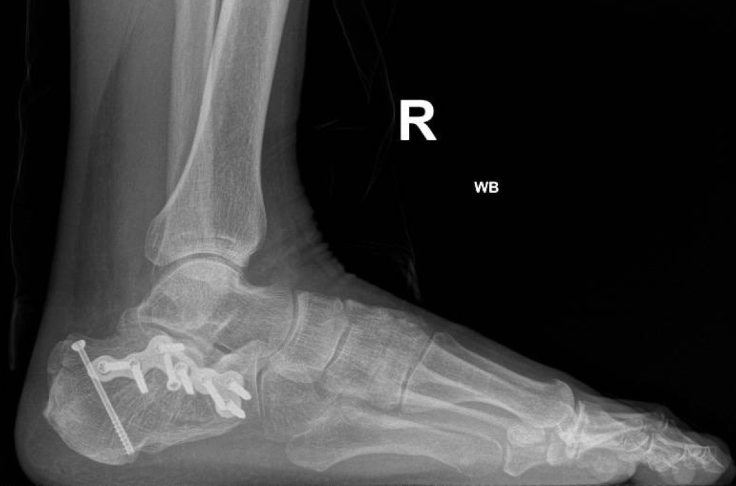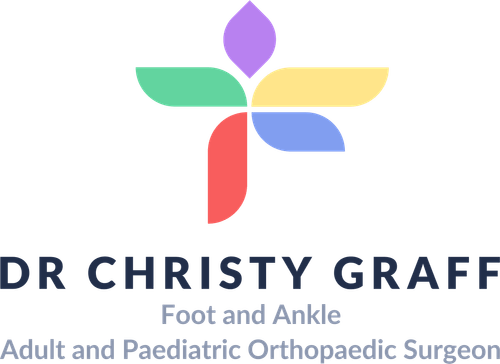Calcaneal Fracture Surgery
What is Calcaneal Fracture Surgery?
Calcaneal fracture surgery is a medical procedure to repair calcaneum (heel bone) fractures. These fractures typically occur from high-energy trauma, such as falls from a height or car accidents. The surgery aims to restore the heel's shape, alignment, and function, often using screws, plates, or other fixation devices.

Who is Suitable for Calcaneal Fracture Surgery?
Calcaneal fracture surgery is suitable for individuals who:
- Have displaced or severely fractured calcaneal bones.
- Experience significant pain, instability, or impaired foot function.
- Are generally healthy enough for surgery and anesthesia.
- Do not have conditions like severe peripheral vascular disease, uncontrolled diabetes, or skin issues that increase the risk of complications.
Doctors may avoid surgery for minor or non-displaced fractures, as these can often heal with non-surgical treatments.
Benefits of Calcaneal Fracture Surgery?
The benefits of calcaneal fracture surgery include:
- Restored alignment and shape of the heel bone.
- Improved foot function, allowing better weight-bearing and mobility and ability to wear shoes
- Reduced long-term complications like arthritis and chronic pain.
- Improved cosmetic appearance of the foot in some cases.
Types of Calcaneal Fracture Surgery
There are several types of calcaneal fracture surgeries, depending on the fracture type and severity:
- Open Reduction and Internal Fixation (ORIF): The most common procedure for calcaneal fractures where the bone fragments are repositioned and secured using screws and plates.
- Percutaneous Fixation: A minimally invasive technique using small incisions to place screws or pins to stabilise the fracture.
- Primary Subtalar Fusion: A procedure that fuses the subtalar joint when severe damage prevents normal joint function.
- External Fixation: An external frame stabilises the bone while it heals in complex or open fractures.
Alternative Options to Calcaneal Fracture Surgery
Non-surgical alternatives may include:
- Casting or Immobilization: For minor or non-displaced fractures, allowing natural healing.
- Physiotherapy: After initial healing, to improve mobility and strength.
- Pain Management: Using medications, orthotics, or other therapies to manage symptoms.
- Lifestyle Adjustments: Reducing weight-bearing activities to minimise strain on the heel.
Preparation Before a Calcaneal Fracture Surgery
- Medical Evaluation:
- Consult Dr. Graff for a complete evaluation, including imaging tests such as X-rays or CT scans to assess the fracture.
- Share your medical history, including medications, allergies, or health conditions.
- Preoperative Instructions:
- Follow fasting guidelines (typically no food or drink for 6–8 hours before surgery).
- Discontinue certain medications (e.g., blood thinners) as your doctor advises.
- Preparation at Home:
- Arrange for transportation and assistance during recovery.
- Prepare your living space for limited mobility post-surgery (e.g., ensure easy access to essentials).
- Smoking and Alcohol:
- Avoid smoking and alcohol, as they can hinder healing and increase surgical risks.
Calcaneal Fracture Surgery Procedure
- The surgery is called an ORIF, which stands for Open Reduction (putting the bones in the correct position) and Internal Fixation of the calcaneum.
- The surgery involves an incision over the outside of the foot above the heel bone.
- The fracture is put back into the correct position and held in place with a plate and screws.
- In theatre, X-rays ensure the bones are aligned correctly, and a tourniquet is placed around the thigh to help with bleeding.
- The surgery can take 90 to 120 minutes.
The Hospital Stay
- You will wake up with a moon boot
- Your foot will be elevated overnight, and you will have antibiotics through a drip.
- Depending on your medical conditions, you may need blood thinner to thin your blood for 6 weeks.
- You will stay in the hospital for 2-5 days with antibiotics, blood thinners, regular paracetamol, regular laxatives, regular vitamin C and stronger painkillers to take if and when required.
- You will be only allowed to touch your foot to the ground for 6 weeks
- Depending on your balance and strength, you may need rehabilitation postoperatively
- Buying a second-hand knee scooter pre-operatively (you can search online) and practising at home before the surgery can be helpful; please bring it into the hospital with you. It is easier to use a knee scooter than crutches.
When You Go Home
- You will need medications for pain relief; regular paracetamol (2 tablets four times a day) is recommended, as well as strong painkillers, especially at night before bed. These can have side effects of drowsiness, nausea and constipation, and other tablets to help with these side effects may be required.
- You will need blood thinner medications for 6 weeks to prevent blood clots
- You will need a shower chair and bags to keep the moon boot dry for the first 2-3 weeks
- You will need to attend your post-op appointment in 2-3 weeks, where the wounds will be checked
- After this, you can shower with a shower chair out of the boot.
Calcaneal Fracture Surgery Rehabilitation
All patients are different. These timelines are guides; some patients may progress faster or slower than others.
0 - 3 Weeks
- You will be in a moon boot for 2-3 weeks; please treat this like a plaster and do not remove it.
- You can only touch your foot to the ground for balance. Please keep your foot elevated and out of bed for the toilet only.
- You will need to bag the leg for showers.
- Pain relief: Please take regular paracetamol with meals and before bed; stronger painkillers are often needed, especially before bed. Also, please take blood thinner medications and vitamin C as prescribed for six weeks.
2 - 3 Weeks
- Post-op appointment with Dr Graff: dressings are changed, and an x-ray is taken
- You can then take the foot out of the boot for showers but wear it for bedtime.
- You will still need to elevate the foot at rest.
- You can start static strengthening, range of motion and balance exercises with physio
6 Weeks
- You will have an appointment with Dr Graff and an x-ray.
- You can begin to progressive weight bearing in a boot over 6 weeks
12 Weeks
- You will have another appointment with Dr Graff and an x-ray.
- You can start weight-bearing without the boot and increase your strength.
- You will still have ongoing swelling, so you may not fit into normal shoes, but you can wear normal shoes if you can fit into them (supportive sneakers are best).
- You can start swimming and cycling.
6 Months
- You will have another appointment with Dr Graff and an x-ray.
- You will feel more ‘yourself’ and improved pain relief in the foot.
12 Months
- You will have another appointment with Dr Graff and an x-ray.
- If the bones are healed, you may be discharged.
When can I drive?
- Left foot 6 weeks without the boot in an automatic car
- Right foot 3 months
When can I return to work/school?
- Seated work at 2-3 months
- Prolonged standing 8-12 months
- Heavy labour work 12-18 months
Calcaneal Fracture Surgery Prognosis
- Most patients achieve good outcomes with proper healing and rehabilitation.
- Recovery can take 6–12 months, with some residual stiffness or discomfort.
- Long-term results are typically better with surgery than non-surgical options for severe fractures.
Calcaneal Fracture Surgery Risks
- Anaesthetic problems
- Nerve injury
- Blood clots
- Infection
- Stiffness
- The fracture does not heal (non-union)
- The fracture heals in the wrong position (malunion)
- Ongoing pain
- Arthritis in the subtalar joint
- The need for further surgery
What if Calcaneal Fracture Surgery is Delayed?
- Increased Complications: Delaying surgery can lead to improper bone healing (malunion or nonunion), making future correction more complex.
- Loss of Function: Prolonged misalignment can impair mobility and cause chronic pain.
- Arthritis Development: Delayed treatment increases the risk of post-traumatic arthritis in the subtalar joint.
- Skin and Tissue Concerns: Swelling or skin damage around the fracture may worsen, complicating surgical repair.
Timely surgery is crucial for optimal outcomes and minimising long-term complications.
If you want more information or have any questions or problems, please contact Dr Graff at admin@christygraff.com or call the rooms at 0493 461 133.
